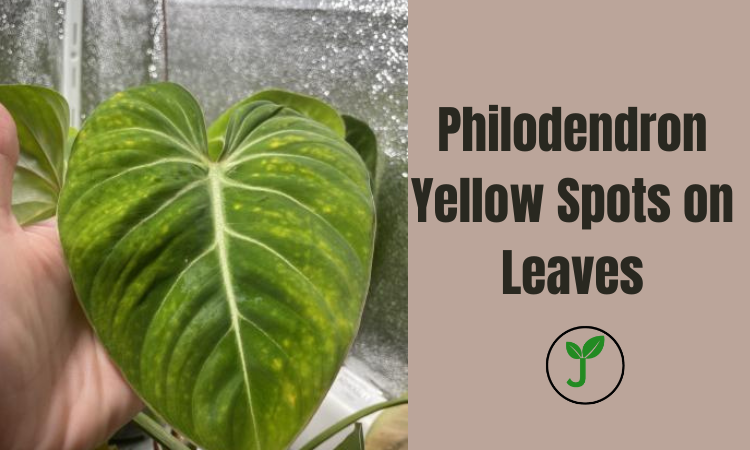Philodendrons are among the most popular houseplants due to their vibrant green leaves and easy maintenance. However, noticing yellow spots on your philodendron leaves can be alarming. These yellow spots could signal underlying issues that need your attention. In this post, we’ll dive deep into the causes, prevention, and treatments for philodendron yellow spots on leaves.
Plus, we’ll offer a comprehensive care guide to help you keep your philodendron thriving. If you’re in need of plant care products like pots, pruning shears, or fertilizers, check out our offerings at RealJef Shop.
What Causes Yellow Spots on Philodendron Leaves?
1. Overwatering
Overwatering is a common mistake that can lead to yellow spots on philodendron leaves. Philodendrons prefer moist soil but not soggy conditions. Excess water can cause root rot, leading to yellowing leaves.
Signs of Overwatering:
- Yellow spots on leaves.
- Wilting or drooping leaves.
- Soggy soil and a musty smell.
2. Underwatering
Conversely, underwatering can also cause yellow spots. When philodendrons do not receive enough water, they may become stressed, resulting in yellowed leaves.
Signs of Underwatering:
- Dry soil.
- Yellow spots on the leaf margins.
- Leaves becoming crispy and brown at the edges.
3. Nutrient Deficiency
A lack of essential nutrients can cause yellow spots on leaves. Philodendrons need a balanced diet of nitrogen, phosphorus, and potassium, along with other trace elements.
Signs of Nutrient Deficiency:
- Yellow spots and pale leaves.
- Slow growth.
- Poor leaf development.
4. Pests and Diseases
Pests such as spider mites, aphids, and scale insects can damage philodendron leaves, leading to yellow spots. Additionally, fungal and bacterial infections can cause similar symptoms.
Common Pests:
- Spider Mites: Tiny, web-spinning insects.
- Aphids: Small, sap-sucking insects.
- Scale Insects: Small, hard-shelled bugs.
5. Improper Lighting
Philodendrons thrive in bright, indirect light. Too much direct sunlight can scorch their leaves, causing yellow spots. Similarly, insufficient light can lead to poor growth and yellowing.
Lighting Tips:
- Place your plant near a north or east-facing window.
- Use sheer curtains to diffuse direct sunlight.
- Consider grow lights if natural light is inadequate.
How to Treat Yellow Spots on Philodendron Leaves
1. Adjust Watering Practices
Proper watering is crucial for healthy philodendrons. Ensure you water your plant only when the top inch of soil feels dry. Avoid letting the plant sit in water.
Watering Tips:
- Use a pot with drainage holes.
- Empty the saucer after watering.
- Adjust watering frequency according to the season.
2. Fertilize Regularly
Use a balanced, water-soluble fertilizer every 4-6 weeks during the growing season. This ensures your philodendron gets all the necessary nutrients.
Fertilization Tips:
- Follow the package instructions for dilution.
- Avoid over-fertilizing, which can burn the roots.
- Consider organic fertilizers for a natural approach.
3. Inspect and Treat Pests
Regularly check your philodendron for signs of pests. Use insecticidal soap or neem oil to treat infestations. For severe cases, consider using a systemic insecticide.
Pest Control Tips:
- Quarantine new plants before introducing them to your collection.
- Clean leaves with a damp cloth to remove dust and pests.
- Prune affected leaves to prevent the spread of pests.
4. Optimize Lighting Conditions
Ensure your philodendron receives adequate but not excessive light. Rotate the plant periodically to ensure even growth.
Lighting Adjustment Tips:
- Monitor light levels with a light meter.
- Move the plant if it shows signs of light stress.
- Supplement with artificial lighting if necessary.
5. Prune and Maintain Plant Health
Regular pruning helps maintain the shape and health of your philodendron. Remove yellowing or damaged leaves to encourage new growth.
Pruning Tips:
- Use clean, sharp pruning shears.
- Cut just above a leaf node.
- Dispose of pruned material properly to prevent disease spread.
Philodendron Care Guide

Here’s a quick reference guide for caring for your philodendron:
| Care Aspect | Details |
|---|---|
| Watering | Water when the top inch of soil is dry. Avoid overwatering. |
| Light | Bright, indirect light. Avoid direct sunlight. |
| Humidity | Prefers high humidity. Mist regularly or use a humidifier. |
| Temperature | Thrives in temperatures between 65-80°F. |
| Soil | Well-draining potting mix. |
| Fertilization | Balanced, water-soluble fertilizer every 4-6 weeks during growing season. |
| Pruning | Remove yellow or damaged leaves regularly. |
| Pests | Inspect regularly for pests. Use insecticidal soap or neem oil for treatment. |
| Repotting | Repot every 2-3 years or when roots outgrow the pot. |
FAQs
What should I do if my philodendron has yellow spots on its leaves?
First, identify the cause by checking watering practices, light conditions, and potential pest infestations. Adjust care accordingly and remove affected leaves.
Can yellow leaves turn green again?
Unfortunately, once a leaf turns yellow, it will not revert to green. Focus on preventing further yellowing by optimizing care practices.
Is it normal for older leaves to turn yellow?
Yes, it’s natural for older leaves to yellow and die off as the plant grows. However, excessive yellowing indicates a problem.
How can I prevent yellow spots on my philodendron leaves?
Ensure proper watering, adequate light, and regular feeding. Keep an eye out for pests and prune regularly to maintain plant health.
What type of soil is best for philodendrons?
A well-draining potting mix is ideal. You can use a mix of peat, perlite, and pine bark.
Can over-fertilizing cause yellow spots on philodendron leaves?
Yes, over-fertilizing can lead to nutrient burn, resulting in yellow spots. Follow recommended feeding guidelines and avoid excessive fertilization.
Conclusion
Yellow spots on philodendron leaves can be distressing, but with the right care and attention, you can restore your plant to health. Regularly monitor your philodendron for signs of stress, and adjust your care routine as needed. If you’re looking for high-quality plant care products, visit our RealJef Shop for a selection of pots, pruning shears, fertilizers, and more.
